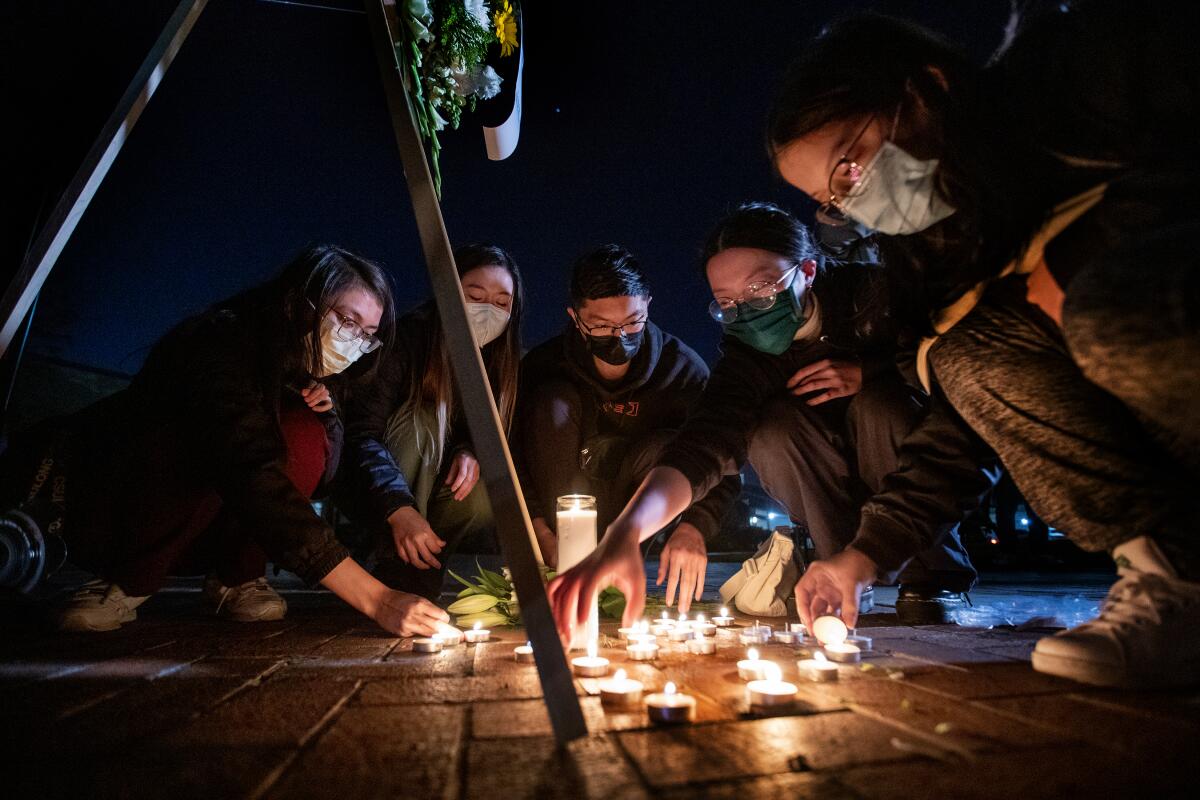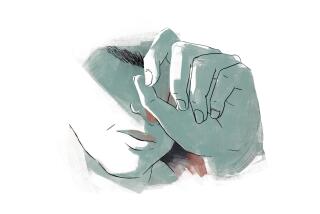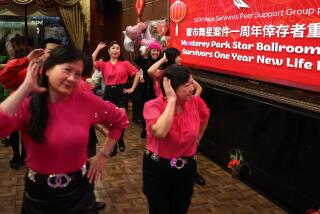Op-Ed: How do we help Monterey Park shooting survivors now left with horrific trauma?

- Share via
I was 10 minutes from the Monterey Park shooting on Lunar New Year’s Eve, eating dim sum with 12 of my closest family members and friends, most Chinese. Monterey Park is where we have usually celebrated since my family and I moved to the U.S. from Asia, and the San Gabriel Valley was where we grew our village of gossiping Asian aunties who doted and cooked and cared for you like you were their own.
So on the morning of our new year, the shooting sent reverberations throughout my community. People heard of relatives who were killed and friends who ended up in the hospital. Some of our aunties danced regularly at the Star Ballroom Dance Studio the shooter targeted. All of us knew that for many in Monterey Park, the dance hall was not just a dance hall. It was a haven, a place where people went to gather, to connect, to remedy their anxieties and stress. Dancing there was their therapy.
As someone who grew up here and now works in mental health, I’ve been haunted by this question: How will this community wrestle with their trauma?
After the Monterey Park and Half Moon Bay shootings, we asked experts how to reclaim the joy and take care of your community.
I know it will be hard for the survivors to receive and accept the help they need. Studies show that Asian American and Pacific Islanders are the least likely racial or ethnic group to seek mental health services, three times less likely to access mental health services when compared to their white counterparts. Just 8.6% of Asian Americans sought any type of mental health service or resources, one 2010 study found, compared to nearly 18% of the general population in the U.S.
The Asian American communities hit by recent mass shootings — in Monterey Park and in Half Moon Bay — face several barriers in getting the resources to cope. First, there is a cultural barrier: a lack of understanding about mental health in the AAPI community and a resistance to seeking help, stemming in part from the “model minority” myth that places exorbitant pressure on AAPI people to prove they are completely self-capable.
Second, there is a structural barrier: An estimated 30% of the AAPI population in the U.S. is not fluent in English (for Chinese Americans, it’s more than 44%). Yet there is a significant lack of multilingual — and culturally competent — mental health services and providers in the healthcare system. And those rare providers who are multilingual have to endure extra work that can cause burnout, discouraging potential providers from entering or continuing this work.
The devastating impacts of these barriers expand beyond the recent mass shootings. As of 2020 there were 23.8 million Americans who identify as AAPI, the fastest-growing racial and ethnic group in the United States — increasing 72% between 2000 and 2015. And we are largely struggling with mental health. Suicide is the leading cause of death for Asian Americans between the ages of 15 and 24. That’s not the case for any other racial or ethnic group in the U.S. in this age range.
While the motives of the perpetrator are still being investigated, Asian Americans remain a population forced to live on high alert.
The need for culturally competent, multilingual and accessible mental health services will only grow. Yet in my work developing digital tools for mental health, I’ve encountered little research examining and calling for improvements in AAPI mental health services. This leaves a lack of relevant training for providers.
This issue is just one concern in the larger conversation around the Monterey Park mass shooting. But it is real and raw for the people in our community today. I’m afraid many will carry their trauma, unaddressed and unacknowledged.
There is no simple solution, only a need for our communities — and those who control the mental health resources around us — to acknowledge people who lack access to services. More providers need improved training in culturally aware and trauma-informed care.
Lai Lai Ballroom & Studio in Alhambra — the second location the attacker targeted — reopened just days after the shooting so people could cope through a sense of normalcy and community. While dance may endure as a form of therapy for some, it is no longer an option for many. Star Ballroom remains closed. Grief, guilt, anxiety and sleeplessness will continue to fester for survivors. Many will need professional support. What happens for them now?
Celine Tien is the founder and chief executive of Flowly: relaxation training, a mobile app for people living with anxiety and chronic pain and illness. She is also a principal investigator on National Institutes of Health-backed clinical trials.
More to Read
A cure for the common opinion
Get thought-provoking perspectives with our weekly newsletter.
You may occasionally receive promotional content from the Los Angeles Times.












